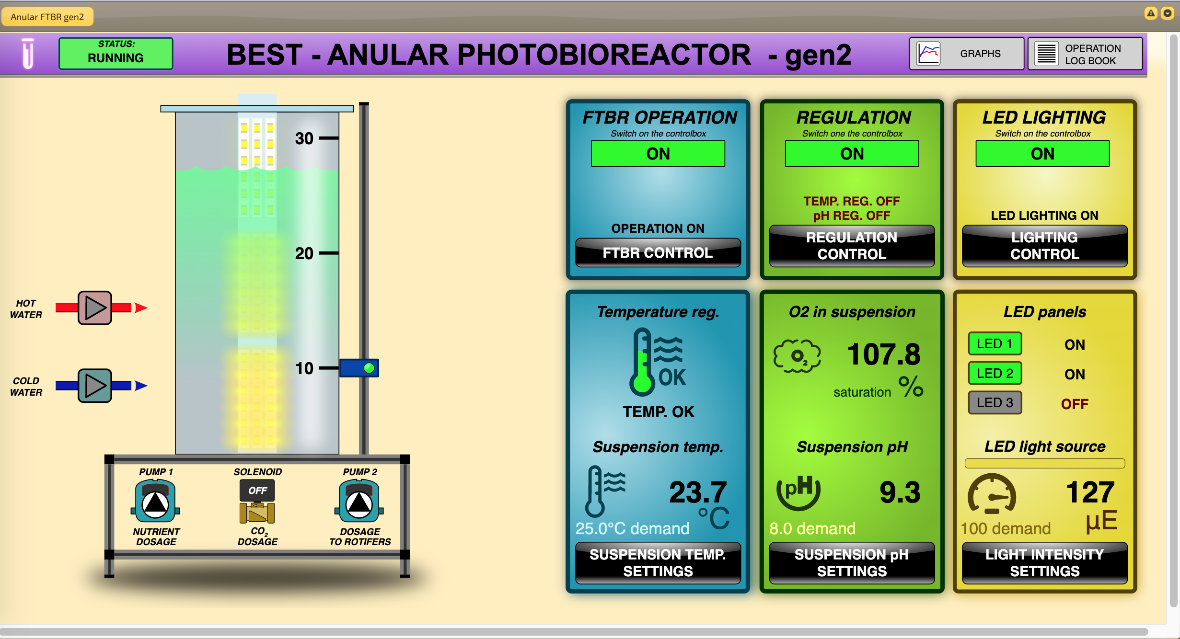-
-Dünser2.jpg/jcr:content/Photobioreaktor%20f%C3%BCr%20Algenzucht_bearb%20(c)%20D%C3%BCnser2.jpg)
© Dünser/BAW zoom gallery -

© BAW/Dünser zoom gallery
Recycling of nutrients from agro-industrial residues through the cultivation of microalgae for fish feeds
Project processing:
Kreuzstein Research Center
Lead partner:
University of South Bohemia České Budějovice (Jihočeská univerzita v Českých Budějovicích)
Project partner:
Institute of Microbiology of the Czech Academy of Sciences
BEST - Bioenergy and Sustainable Technologies Ltd.
Mass rearing of healthy fish larvae is an important production step in aquaculture. Fish larvae of some species, especially of the Salmonidae family, can be fed dry feed mixtures from the beginning. However, the rearing of more sensitive freshwater and marine fish larvae relies heavily on live feeds. Since dry feeds offer economic advantages, intensive research efforts have been made to replace live feeds with dry feeds. However, no reliable recipes are currently available. This is mainly attributed to unbalanced nutrient composition and low digestibility of feed particles due to the underdeveloped digestive tract of fish larvae. In addition, deterioration of water quality in rearing tanks is another disadvantage of currently available dry feed types.
For economically relevant freshwater fish such as walleye, perch, eelpout, European catfish and certain coregone species, larval rearing only works with live feed. The aim of the presented project was the cultivation and production of microalgae (phytoplankton) on useful and residual water. This phytoplankton is used as a food source for live food cultures (rotifers, protozoa), which in turn are used as feed for various fish species. These live food cultures were tested for their suitability as fish food for fish larvae. To date, no direct comparison exists on the effectiveness of the various live feeds. It also remains unclear whether there is a species-specific preference for different types of live feed. These data are of great importance for nursery fish farms to select the most suitable feed types and feeding systems. Through this project, competences in water utilization, microalgae cultivation and fish farming were combined and expert knowledge was used across disciplines.
The project yielded the following results: Rotifers (Brachionus plicatilis, Brachionus calyciflorus) and the protozoan Paramecium bursaria were successfully reared with phytoplankton cultured on residual water. Feeding trials on walleye pollock, eelpout, and whitefish were conducted. Copepods fished from lake plankton were used as comparative feed (control). Survival rate, weight gain, and malformation rate of fish larvae were examined as measures of rearing success.
For initial feeding of walleye pollock larvae for a period of up to 10 days, freshwater rotifers or Paramecium bursaria were most suitable. Following this feed, copepod and Artemia nauplii were tested. Copepod nauplii were superior to Artemia nauplii, as higher survival rates and more homogeneous growth were obtained with the former. To ensure the transferability of these findings, complementary studies were conducted on eel smolt and whitefish. Eelpout larvae, like walleye larvae, could initially be fed freshwater rotifers or Paramecium bursaria. However, copepod nauplii were just as suitable. As for the walleye, copepod nauplii were a better subsequent food for the eelpout than artemia nauplii.
For the Reinanken, initial feeding with freshwater rotifers or Paramecium bursaria did not produce any benefits. Feeding copepods from the beginning was optimal. Artemia was equally suitable for larvae of this fish species.
Suitability of Different Live Feed for First Feeding of Freshwater Fish Larvae
